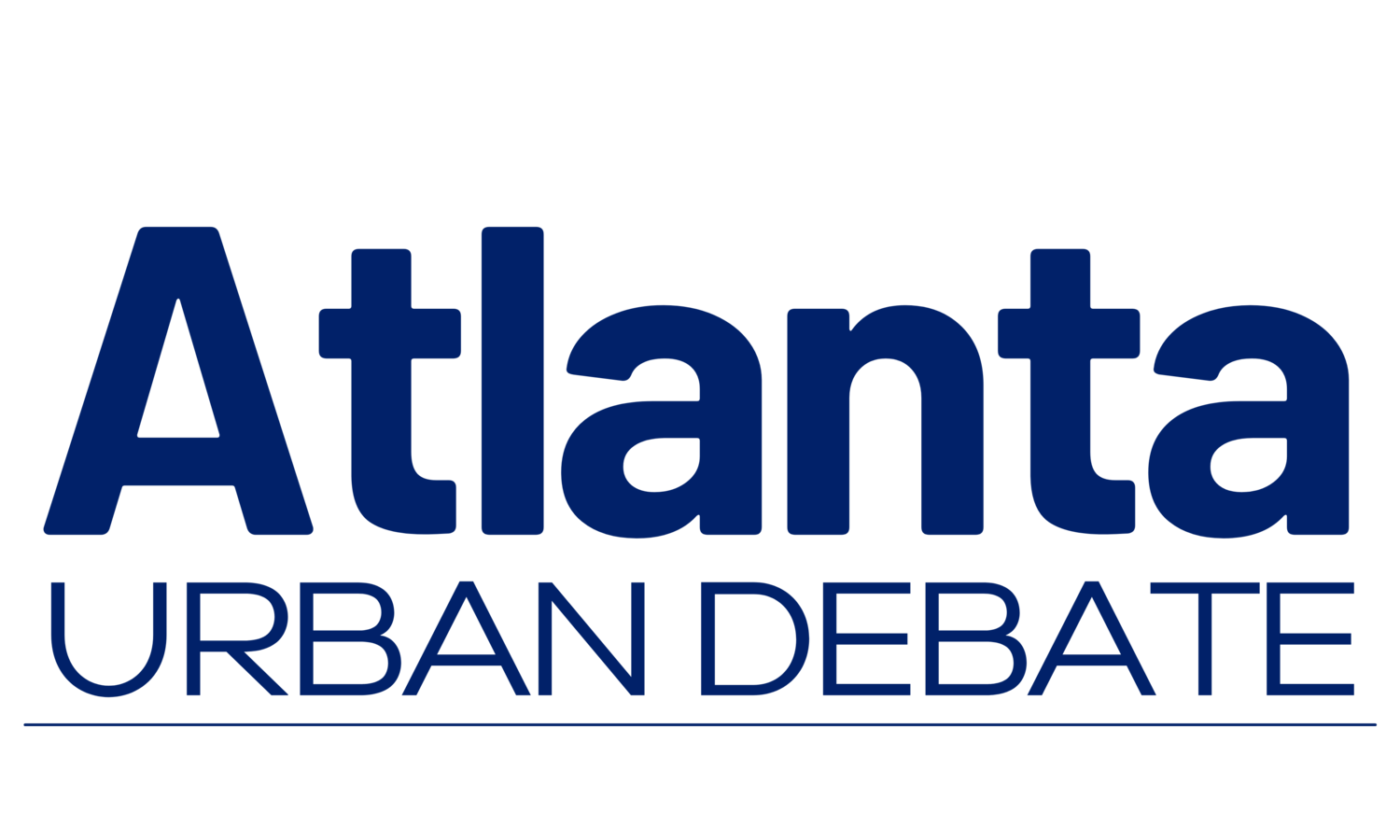The Atlanta Urban Debate League is committed to providing excellent debate education programs, services, and opportunities to diverse students, educators, and members of the community!
Debate Structure: Silly Debate - Guided
Learning Objectives
Introduce format of a policy debate round.
Deliver speech from prepared notes.
Time Needed
~20-25 min.
Resources & Materials
Paper (2-3 sheets per student)
Pencil/pen (1 per student)
Construction paper (4 sheets), marker (teacher)
Teacher Preparation
- Create four signs (using construction paper/marker) for each speaking role.
- Affirmative Roles: 1st Affirmative Speaker/2nd Affirmative Speaker
- Negative Roles: 1st Negative Speaker/2nd Negative Speaker
- Write down a “silly” topic that students can debate.
- Example: Unicorns are better than dragons.
- Review the Debate Structure page from this section, especially the format of a debate and relevant points of improvement.
Lesson Outline
- Debate Structure (Lecture)
- Briefly introduce the format of a debate.
- Write the format on the board for future reference.
- This should take NO MORE THAN 8 minutes.
- The “Silly Debate” will reinforce the speaker roles/positions.
- This “lecture” is more of a short introduction, so teach accordingly.
- Reassure students that if they are confused, the next activity will make it clear.
- Briefly introduce the format of a debate.
- Silly Debate (Activity)
- Once the “lecture” has concluded, ask for four volunteers to participate in a silly debate.
- Hand each volunteer a speaker role and have each team (Affirmative/Negative) sit together.
- Announce the topic. Begin the Silly Debate.
- Following the format of a policy debate, each speaker will “give” the appropriate speech by doing the following:
- Announcing speaker role/name & purpose of speech
- Very, very briefly making an argument for their side (no more than 20 seconds)
- Example 1AC:
- I’m the 1st Affirmative Speaker, and this is the 1st Affirmative Constructive, when the Affirmative team lays the foundation for their argument. Also, unicorns are better than dragons because they have horns!
- Continue until the “debate” is finished. Guide students through the debate as necessary.
- Following the format of a policy debate, each speaker will “give” the appropriate speech by doing the following:
- Once the “lecture” has concluded, ask for four volunteers to participate in a silly debate.
Points of Improvement
Students do not know which speaker delivers which speeches.
Students are entirely reliant on guidance of the instructor.
Signs of Mastery
Students understand the purpose and correct speaker for each speech.
Instructor Notes
This activity is best suited for less experienced students.
More advanced students can assist by volunteering to participate as a speaker in the Silly Debate.
Guide/prompt as necessary, whenever students appear confused.
Don’t over-lecture! Debate is learned by doing!
